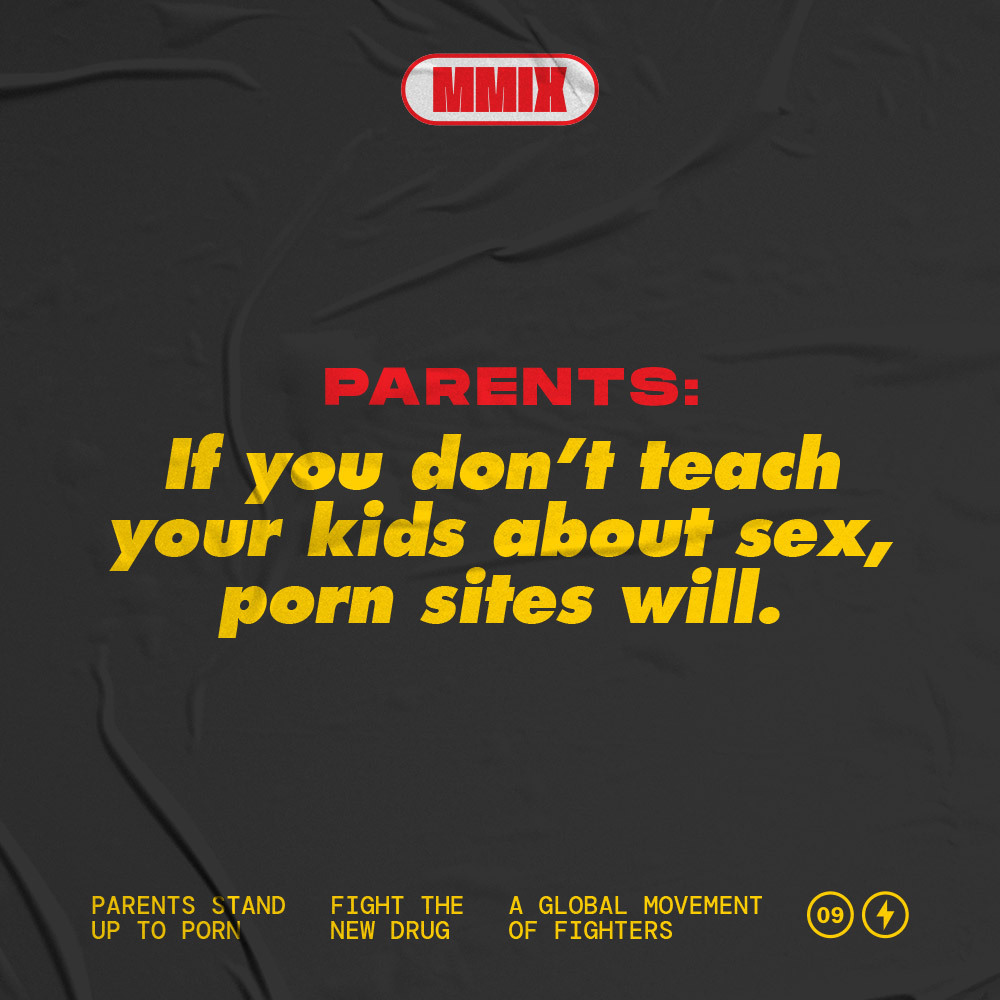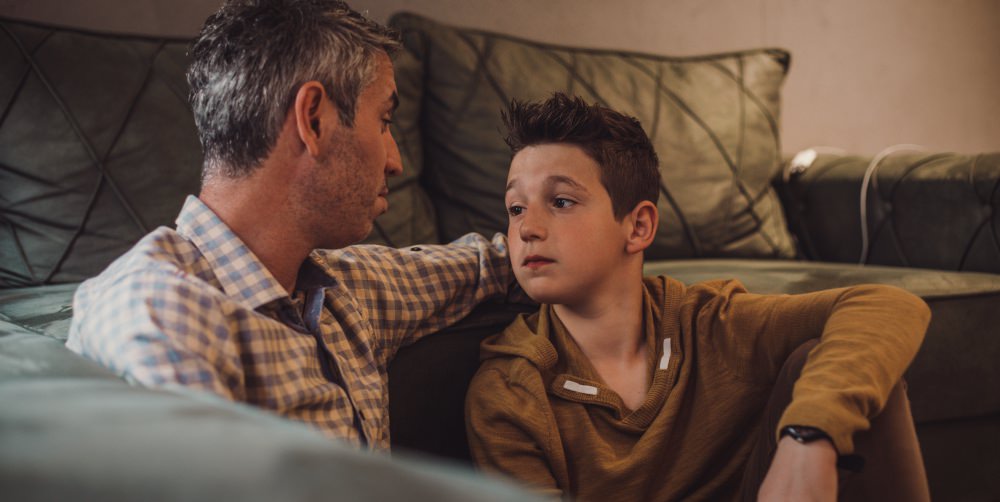As the #MeToo movement brought thousands upon thousands of heartbreaking stories of abuse to light, sexual ethics have become an increasingly popular topic of conversation. More specifically, the discussion of consent has become a necessity, especially in relationships.
According to Peggy Orenstein, journalist and bestselling author of “Girls & Sex” and “Boys & Sex,” discussing consent needs to start with parents and their children and that conversation must also involve talking about porn. Recently, she explained how parents are less likely to approach this conversation with young boys, and this drastically needs to change.
But why have conversations with boys, especially, been so neglected?
Related: TEDx Talk—Why This Sex Therapist Wants Parents to Talk About Porn
Orenstein says that, “[Parents] have done a much better job grooming girls to resist some of these messages or at least critique them than we have with boys.” Additionally, these conversations are especially important for boys because porn is often the first reference point they—and every other teen—have for what sex should look like, and it shapes their idea of what they should do when they have sex.
We’ll get into why that’s troubling a little later on, but first we need to talk about how Orenstein suggests parents should speak to their sons, specifically, about porn.
Orenstein’s six tips for talking about porn and consent with a son (or daughter)
According to parents, sons, and experts, talking about consent, sex, and porn are difficult and uncomfortable for just about everybody. All that to say, it’s not just you who feels awkward talking about those kinds of things.
Still, these things deserve airtime in parents’ conversations with their boys, or girls.
1. Inform yourself about porn.
If parents are going to take on a conversation with their son about a topic like porn, they’ll first need to get an idea of what porn is like today in the ever-changing landscape of online media.
In other words, they should be asking themself, “What is my son stumbling upon when he becomes sexually curious?”
With over 1,300 published articles, our blog is a really excellent resource for reading up on what’s mainstream and prevalent in today’s mainstream porn themes.
2. Persevere with the conversation (no matter how awkward) and be receptive to questions (no matter how personal).
Porn can be violent and show everything but an accurate depiction of what consensual, mutually pleasurable sex is truly like. In fact, 88.2% of porn scenes contain some form of physical aggression against women. Orenstein says that, while they may not voice it, boys tend to desire guidance regarding the imagery they’re seeing.
Speaking up about this violence is a must, especially seeing as research shows that violent media can translate into violent reality, even unintentionally.
3. Talk to them about parts of sex that aren’t portrayed in porn, like conversations with your partner and foreplay.
According to Orenstein, the sex acts portrayed in porn are rarely geared towards female pleasure, or pleasure for anyone. Instead, they offer different kinds of fetishes and kinks, some of which can be dangerous to try, especially if they don’t know what they’re doing.
Moreover, in her conversations about porn with boys, many expressed anxiety about sexual stamina. One boy, in particular, had even been labeled “Minute Max.”
Orenstein says that these are just a couple of reasons why parents need to step in when it comes to porn and talk about what’s normal, healthy, and pleasurable.
4. Start the conversation about sexual pleasure earlier than you think.
Because “curiosity about sex is normal,” having a strong foundation of smaller conversations and lessons about sex, pleasure, and consent will make discussing porn easier when interest in sex is shown later on in life.
5. Talk to your kids about how porn misrepresents body types, women, people of color, and same-sex intimacy.
Orenstein puts it simply when she says, “The racism in porn is endemic, and nobody ever discusses that.” (Check out this article of ours for more information about racist stereotypes in porn.)
Mainstream porn often normalizes thin, white, cisgender, and able-bodied people—while other body types, people of color, people with disabilities, and people of other marginalized identities are frequently stereotyped and fetishized. When this happens, porn consumers can begin to see people who are marginalized as lesser and can perpetuate a harmful view of others as a result.”
Related: 10 Big Differences Between Healthy Sex And The Sex Porn Portrays
Here’s a non-exhaustive list of how porn misrepresents other sexualities, and another non-exhaustive list of normal things porn sites often label as fetishes.
6. Have broader conversations about racism, sexism, and consent—some of the major issues in porn.
“Mainstream media bombards our kids with messages about male sexual entitlement and female sexual availability and male dominance and female submission that are equally damaging to our young people,” says Orenstein.
Porn pushes this narrative strongly in a toxic way that, as we’ve said before, harms boys’ understandings and views regarding race, gender dynamics, consent, and more.
Related: For Parents: How To Update “The Sex Talks” With Your Kids To Include Porn
Why having conversations about porn and consent matter: porn normalizes consentless sex
A massive part of the average mainstream porn narrative includes a woman (or women) who will do anything for sex. They always want more, they always want bigger, they always want better, and they are totally down to experience sex in as many different forms as they can no matter how painful, degrading, or extreme.
If this doesn’t sound representative of reality to you, that’s because it isn’t.
Porn is a virtual, fantasy world where sex is all that matters—which is exactly the point: it’s not reality. To put it another way, it promises a lot more than it can provide, twisting consumers’ expectations and understanding of sex in the process.
In some cases, what it provides is the normalization of extreme scenarios that don’t include consent.
Related: How Early Porn Exposure Traumatizes Boys And Fuels Toxic Masculinity
Take, for example, the story of daytime talk show host and comedian, Ellen DeGeneres. She was sexually assaulted numerous times by her stepfather growing up, yet porn site search results make light of traumatic abuse like what she experienced by portraying them in scripted form.
“Be Frank,” a video created by Dutch natives Damayanti Dipayana and Camilla Borel-Rinkes, further points to porn normalizing traumatic events that don’t include consent.
The seven-minute film, which features men discussing the #MeToo movement and the role men can play in combating sexual violence, asks men to read different storylines and then guess whether the situation they’ve just read about is from a porn script of a #MeToo story.
The storylines start out relatively cliche and humorous, but quickly become sinister and abusive, eventually culminating in storylines where a sleeping college girl is taken advantage of by a group of men and where a stepdad punishes his step-daughter by raping her.
As clinical professor of urology and reproductive medicine at Cornell University and one of the nation’s leaders in the diagnosis and treatment of men’s sexuality issues, Harry Fisch, MD, puts it: “Porn isn’t just risky business; it’s a killer for your sex life.”
It’s no wonder when porn teaches you consent is optional. And if parents don’t teach their boys, and girls, about consent and healthy sex, porn will.

Your Support Matters Now More Than Ever
Most kids today are exposed to porn by the age of 12. By the time they’re teenagers, 75% of boys and 70% of girls have already viewed itRobb, M.B., & Mann, S. (2023). Teens and pornography. San Francisco, CA: Common Sense.Copy —often before they’ve had a single healthy conversation about it.
Even more concerning: over half of boys and nearly 40% of girls believe porn is a realistic depiction of sexMartellozzo, E., Monaghan, A., Adler, J. R., Davidson, J., Leyva, R., & Horvath, M. A. H. (2016). “I wasn’t sure it was normal to watch it”: A quantitative and qualitative examination of the impact of online pornography on the values, attitudes, beliefs and behaviours of children and young people. Middlesex University, NSPCC, & Office of the Children’s Commissioner.Copy . And among teens who have seen porn, more than 79% of teens use it to learn how to have sexRobb, M.B., & Mann, S. (2023). Teens and pornography. San Francisco, CA: Common Sense.Copy . That means millions of young people are getting sex ed from violent, degrading content, which becomes their baseline understanding of intimacy. Out of the most popular porn, 33%-88% of videos contain physical aggression and nonconsensual violence-related themesFritz, N., Malic, V., Paul, B., & Zhou, Y. (2020). A descriptive analysis of the types, targets, and relative frequency of aggression in mainstream pornography. Archives of Sexual Behavior, 49(8), 3041-3053. doi:10.1007/s10508-020-01773-0Copy Bridges et al., 2010, “Aggression and Sexual Behavior in Best-Selling Pornography Videos: A Content Analysis,” Violence Against Women.Copy .
From increasing rates of loneliness, depression, and self-doubt, to distorted views of sex, reduced relationship satisfaction, and riskier sexual behavior among teens, porn is impacting individuals, relationships, and society worldwideFight the New Drug. (2024, May). Get the Facts (Series of web articles). Fight the New Drug.Copy .
This is why Fight the New Drug exists—but we can’t do it without you.
Your donation directly fuels the creation of new educational resources, including our awareness-raising videos, podcasts, research-driven articles, engaging school presentations, and digital tools that reach youth where they are: online and in school. It equips individuals, parents, educators, and youth with trustworthy resources to start the conversation.
Will you join us? We’re grateful for whatever you can give—but a recurring donation makes the biggest difference. Every dollar directly supports our vital work, and every individual we reach decreases sexual exploitation. Let’s fight for real love:





